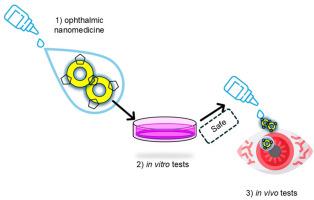哭泣游戏:基于脂质的眼科纳米药物,以及在体外模型中测试它们治疗干眼症的性能
IF 4.9
3区 医学
Q1 PHARMACOLOGY & PHARMACY
Journal of Drug Delivery Science and Technology
Pub Date : 2025-09-02
DOI:10.1016/j.jddst.2025.107476
引用次数: 0
摘要
干眼病(DED)是世界上最常见的眼表疾病,目前用局部配方治疗水合、润滑或抗炎作用。由于眼表面的天然屏障限制了外源性物质的保留和渗透,局部配方的局部生物利用度很小。基于脂质的纳米药物是最被制药行业和监管机构接受的纳米药物。蒸发性DED病例可受益于局部黏液或黏液渗透脂基眼科纳米药物(LBON)。除了润滑和修复脂质膜外,局部纳米药物还提供位点特异性药物递送,放大靶向细胞内递送,减少全身药物分布。由此减少的给药频率可以提高患者对慢性治疗的依从性。然而,要治疗DED, LBON不能干扰视力或刺激,其化学成分、渗透压、粘度、pH值和折射率必须正确选择/调整。重要的是,纳米药物的药代动力学和药效学取决于用于产生每个纳米颗粒结构的技术。因此,在实验室规模制备的纳米药物的结构特征和由此产生的活性不同于那些在更大的工业规模生产的纳米药物。由于伦理和经济原因,LBON的临床前评估应使用体外疾病模型进行。在这里,LBON在过去10年的临床前表现被严格审查。总的来说,为了变得更加重要和可预测,LBON的进一步临床前开发需要在技术上更加严格,并包括更复杂和广泛可用的体外模型的帮助。本文章由计算机程序翻译,如有差异,请以英文原文为准。

The crying game: lipid-based ophthalmic nanomedicines, and in vitro models to test their performance against dry eye disease
Dry eye disease (DED), the most prevalent ocular surface disorder worldwide, is currently treated with topical formulations for hydration, lubrication, or anti-inflammatory action. Due to natural barriers of the ocular surface, which limit retention and penetration of exogenous materials, the local bioavailability of topical formulations is minimal. Lipid-based nanomedicines are the most accepted nanomedicines by the pharmaceutical industry and regulatory agencies. Evaporative DED cases could benefit from topical mucoadhesive or mucopenetrating lipid-based ophthalmic nanomedicines (LBON). Besides lubricating and restoring the lipid film, topical nanomedicines offer site-specific drug delivery, magnified targeted intracellular delivery, and reduced systemic drug distribution. The resultant reduced dosing frequency may improve patients' adherence to chronic treatments. To treat DED, however, LBON must not interfere with vision or irritate, and their chemical composition, osmolarity, viscosity, pH, and refractive index must be properly selected/adjusted. Importantly, pharmacokinetics and pharmacodynamics of nanomedicines depend on the techniques used to produce each nanoparticulate structure. Hence, the structural features and resultant activities of nanomedicines prepared at lab scale, differ from those being manufactured at larger industrial scales. Due to ethical and economic reasons, preclinical assessment of LBON should therefore be performed using in vitro disease models. Here, the preclinical performances of LBON reported over the past 10 years, are critically examined. Overall, to become more significant and predictable, further preclinical developments of LBON need to become more technically rigorous and include the help of more sophisticated and broadly available in vitro models.
求助全文
通过发布文献求助,成功后即可免费获取论文全文。
去求助
来源期刊
CiteScore
8.00
自引率
8.00%
发文量
879
审稿时长
94 days
期刊介绍:
The Journal of Drug Delivery Science and Technology is an international journal devoted to drug delivery and pharmaceutical technology. The journal covers all innovative aspects of all pharmaceutical dosage forms and the most advanced research on controlled release, bioavailability and drug absorption, nanomedicines, gene delivery, tissue engineering, etc. Hot topics, related to manufacturing processes and quality control, are also welcomed.

 求助内容:
求助内容: 应助结果提醒方式:
应助结果提醒方式:


